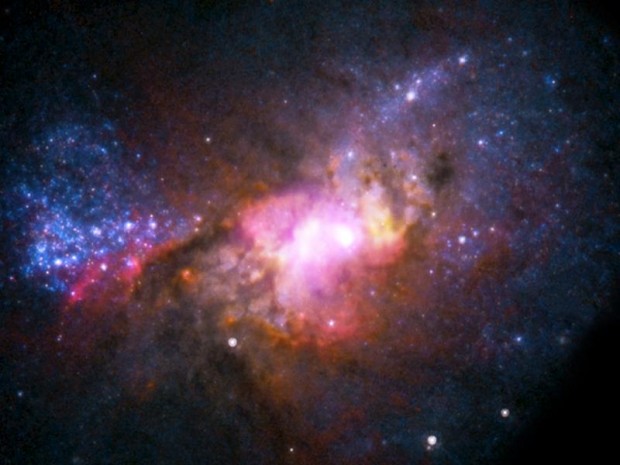
NASA explains this image as follows:
Stars are forming in Henize 2-10, a dwarf starburst galaxy located about 30 million light years from Earth, at a prodigious rate, giving the star clusters in this galaxy their blue appearance. This combination of a burst of star formation and a massive black hole is analogous to conditions in the early Universe. Since Henize 2-10 does not contain a significant bulge of stars in its center, these results show that supermassive black hole growth may precede the growth of bulges in galaxies. This differs from the relatively nearby universe where the growth of galaxy bulges and supermassive black holes appears to occur in parallel.
The evidence for the black hole, we’re told, is a radio source coinciding with a powerful x-ray source at the galaxy’s center; data suggest that it has a mass one million times that of the sun. We know it’s there because the image combines data from multiple instruments working in several wavelengths:
This image shows optical data from the Hubble Space Telescope in red, green and blue, X-ray data from NASA’s Chandra X-ray Observatory in purple, and radio data from the National Radio Astronomy Observatory’s Very Large Array in yellow.
This is what the universe looks like as you approach omniscience: all the wavelengths all the time. What kind of godlike creature sees the universe like that? The answer Earthling: you do.
Apotheosis, only not as advertised.
 Gearfuse Technology, Science, Culture & More
Gearfuse Technology, Science, Culture & More


